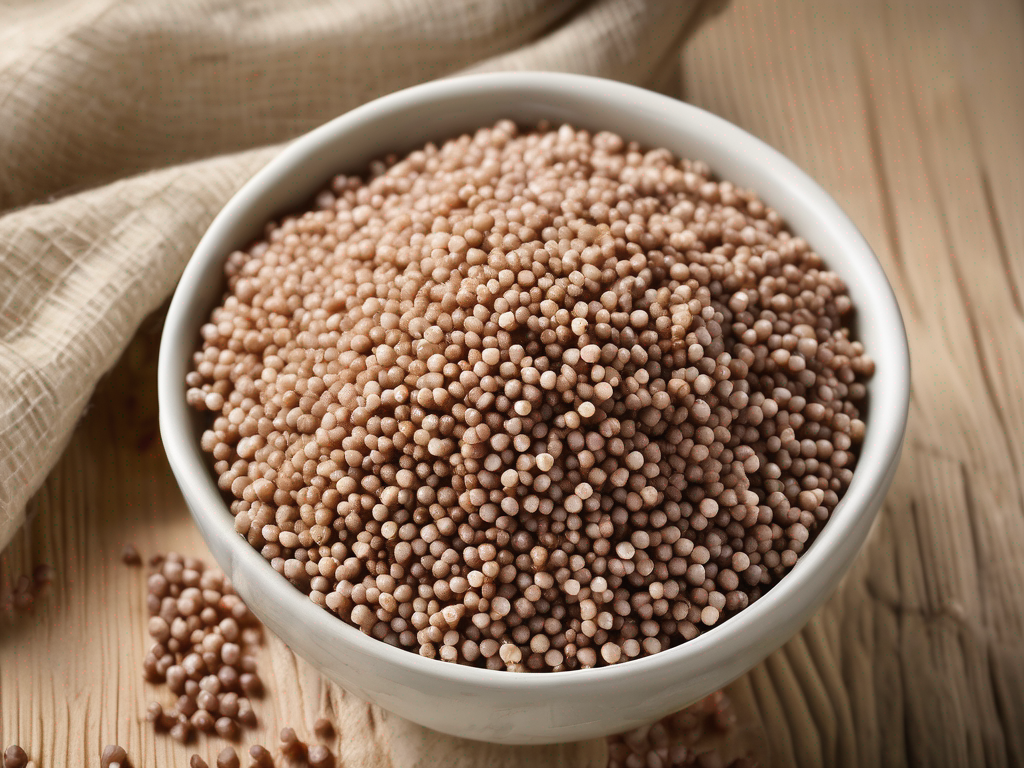
Freezing Buckwheat: A Guide to Extending Shelf Life
Get Your Free Food Safety Cheat Sheet
30 most common foods with instant answers. Print it and stick it on your fridge—completely free!
Freezing Buckwheat: A Guide to Extending Shelf Life
Buckwheat is a versatile and nutritious grain that can add variety to your meals. Whether you use it in salads, soups, or as a substitute for rice, buckwheat offers a range of health benefits. However, if you've bought a large quantity of buckwheat and want to extend its shelf life, freezing is a great option. In this guide, we'll explore the process of freezing buckwheat, along with some tips to ensure it stays fresh and safe to eat. (Buckwheat)
Understanding Buckwheat Shelf Life
Before we delve into the specifics of freezing buckwheat, it's essential to understand its shelf life. Buckwheat, like other grains, can go rancid over time due to exposure to air, light, and moisture. Proper storage is crucial to maintaining its flavor and nutritional value. Here are some key points to keep in mind:
Factors Affecting Buckwheat Shelf Life
- Exposure to Air: Oxygen can cause buckwheat to spoil faster.
- Light: Direct sunlight can lead to the degradation of nutrients in buckwheat.
- Moisture: Humidity can promote the growth of mold and bacteria on buckwheat.
Freezing Buckwheat: Step-by-Step Guide
Freezing buckwheat is a simple process that can help preserve its freshness for an extended period. Follow these steps to freeze buckwheat effectively:
Step 1: Packaging
- Transfer the buckwheat into a freezer-safe, airtight container or a heavy-duty freezer bag.
- Ensure there is minimal air inside the packaging to prevent freezer burn.
Step 2: Labeling
- Label the container or bag with the date of freezing to track its freshness.
- Include any specific instructions for cooking or using frozen buckwheat.
Step 3: Freezing
- Place the packaged buckwheat in the freezer, away from any odorous foods.
- Keep it in a section of the freezer where it won't be crushed or damaged.
Step 4: Thawing
- When ready to use, thaw the frozen buckwheat in the refrigerator overnight.
- Use it within a few days of thawing for the best taste and texture.
Safety Tips for Freezing Buckwheat
Ensuring the safety of your frozen buckwheat is essential to prevent any foodborne illnesses. Here are some tips to keep in mind:
Safety Precautions
- Freeze Fresh: Only freeze buckwheat that is fresh and free from any signs of spoilage.
- Proper Sealing: Ensure your packaging is sealed tightly to prevent exposure to air and moisture.
- Storage Duration: Consume frozen buckwheat within 6 months for optimal quality.
Conclusion
In conclusion, freezing buckwheat is an effective way to extend its shelf life while preserving its nutritional value. By following the steps outlined in this guide and adhering to safety tips, you can enjoy the benefits of buckwheat for an extended period. Remember to thaw and use frozen buckwheat correctly to maintain its flavor and texture. Experiment with incorporating frozen buckwheat into your favorite recipes for a convenient and healthy meal option.
For more information on buckwheat and its culinary uses, visit our buckwheat page. Happy cooking! (Buckwheat)
Authoritative Food Safety References
These agencies and university labs inform every tip and health precaution we publish.
USDA FoodKeeper – Cold Storage Guidelines
Official refrigerator, freezer, and pantry timelines maintained by the U.S. Department of Agriculture.
Visit USDA FoodKeeperFDA Produce Safety Rule & Grower Guidance
Field-to-fridge handling practices that prevent contamination of fruits, vegetables, and leafy greens.
Visit FDA Produce SafetyCDC Foodborne Illness Prevention Hub
Surveillance-backed guidance on pathogens, symptoms, and steps to reduce foodborne illness risk.
Visit CDC Food SafetyUC Davis Postharvest Technology Center
University research detailing optimal storage atmospheres for produce after harvest.
Visit UC Davis PostharvestPenn State Extension – Home Food Preservation & Safety
Peer-reviewed extension bulletins on safe canning, chilling, and reheating practices.
Visit Penn State ExtensionGet Your Free Food Safety Cheat Sheet
30 most common foods with instant answers. Print it and stick it on your fridge—completely free! Want more? Upgrade to the complete guide with 70+ foods.
Scan your food directly and get instant safety info using our AI-powered camera feature.